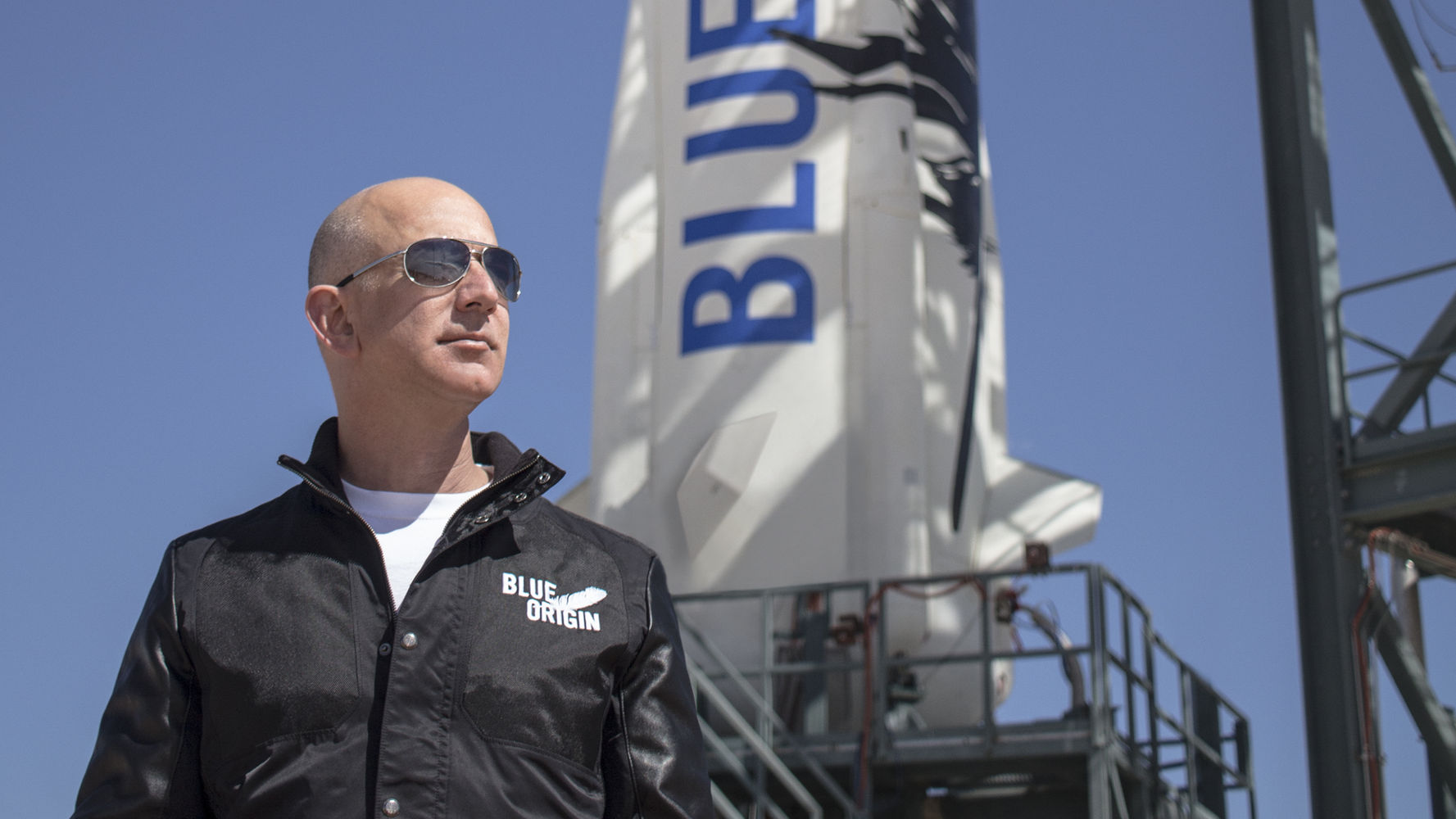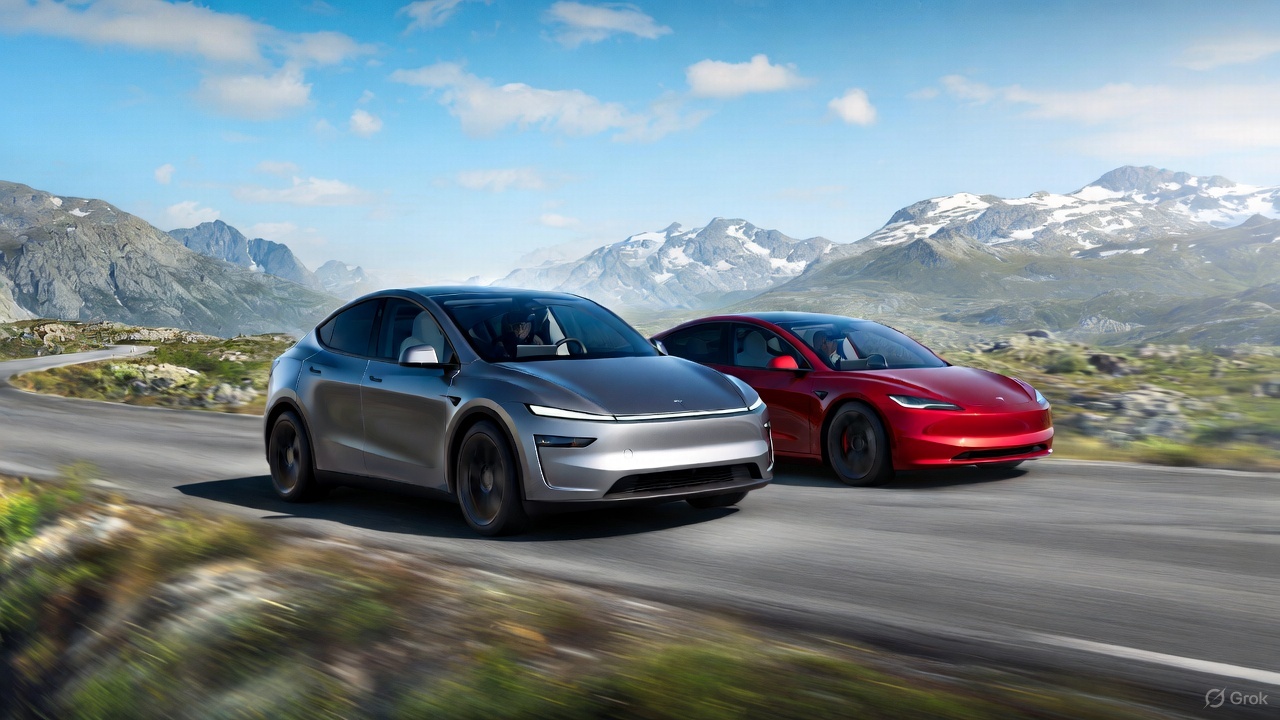News
Amazon’s Bezos looks to compete with SpaceX for moon missions

On February 27, SpaceX announced that two private citizens had contracted to fly around the moon and back. Recognizing important contributions to the SpaceX program from NASA’s Commercial Crew Program, which provided most of the funding for Dragon 2 development, the SpaceX blog post proudly referred to its upcoming Falcon Heavy rocket, which was developed with internal funding.
“Like the Apollo astronauts before them, these individuals will travel into space carrying the hopes and dreams of all humankind, driven by the universal human spirit of exploration.”
Now, not to be outdone, Amazon CEO Jeff Bezos is ready to compete with SpaceX CEO Elon Musk head-to-head with his Blue Origin space company. Blue Origin has accumulated a successful record of space launches over the past year, and has set forth goals to one day carry tourists into space and around the moon.
1st BE-4 engine fully assembled. 2nd and 3rd following close behind. #GradatimFerociter pic.twitter.com/duE4Tnzvkx
— Jeff Bezos (@JeffBezos) March 6, 2017
For most of the 20th century, countries with major economies competed for the most prominent space missions. No longer is that the case. NASA’s $19 billion dollar budget is simply not large enough to accommodate both commercially-driven and traditional visions for the agency. So, more than four decades after the last human walked on the moon, two of the largest technology innovators in the world are trying to take advantage of NASA’s recapitulation to lunar conquests.
According to a seven-page white paper that the Washington Post has obtained and verified for authenticity, Blue Origin’s proposal, dated January 4, is focused on cargo missions, not human transport. Those missions would build from equipment delivery to eventually establishing a human colony on the moon. This is different than the Apollo missions, which are remembered for astronauts who left “flags and footprints,” found some famous rocks, and then returned home.
The Blue Origin white paper should be in the hands of NASA and the Trump administration within a matter of days. “What it really wants to do is to land this lunar module to be able to bring this cargo, supplies, equipment, science experiments,” says the Washington Post’s Christian Davenport.
Blue Origin aims to undercut SpaceX, which has received much acclaim with Falcon 9 rockets that have been recovered for re-use.
With $100 million of his early fortune, Musk founded Space Exploration Technologies, or SpaceX, in May, 2002. SpaceX has already successfully launched 29 Falcon 9 rockets, with the moon as an upcoming destination. The two private citizens who will ride in a lunar capsule as early as next year will “skim the surface of the moon, go quite a bit further out into deep space and then loop back to Earth,” Musk described.
Other companies also seem to be trying to get into the moon game. Moon Express, a startup company based in Cape Canaveral, also obtained permission from the U.S. government to travel to the moon and explore for resources. So, too, has the United Launch Alliance, a collaborative endeavor of Boeing and Lockheed Martin; their plans involve a transportation network to the area around the moon, called cislunar space.
The high-stakes competition between Musk and Bezos is part of a larger set of high-tech innovation through a self-sustaining economy in space. “Our vision is millions of people living and working in space,” Bezos says.
Those goals are mostly supported by President Trump, who seems to prefer space missions to the moon over outer space.

News
Tesla FSD earns high praise in South Korea’s real-world autonomous driving test
As per the Korea Expressway Corporation’s report, the FSD test was conducted on December 15, 2025, from 10 a.m. to 6 p.m.

Tesla’s Full Self-Driving (FSD) has received a bullish assessment from the Korea Expressway Corporation following a real-world autonomous highway driving test.
A report of the test, shared on Naver Cafe, showed high praise for the system’s safety, capabilities, smooth maneuvers, and confidence.
South Korean highway test
As per the Korea Expressway Corporation’s report, the FSD test was conducted on December 15, 2025, from 10 a.m. to 6 p.m. Four people were in the Tesla that was tested, including the head of the mobility department. All four FSD driving modes were tested, from “Sloth” to “Mad Max.”
To test FSD’s performance, the system was tasked to operate on highways such as Gyeongbu, Cheonan, and Cheonan-Nonsan, as well as city areas in Dongtan New Town, Sejong Special City, and Daejeon Metropolitan City, among others.
Since FSD is only available for the Tesla Model S and Model X that are imported to South Korea from the United States, the system was not tested in a Model 3 or Model Y, which comprise the majority of Teslas on the country’s roads today.
Highway test results
Results showed FSD performing well, both in inner-city roads and on highways. In inner city roads, the testers noted that FSD was capable of autonomous driving at a level that already exceeds that of general human drivers, except in very few areas, such as unprotected left turns and work zone intersections.
In highways, the testers described FSD’s performance as “excellent,” though the system still showed frequent cases of violations in local bus lanes and max speed limit rules. These, however, could hopefully be addressed by Tesla in a future FSD update without many issues. The testers also noted that in some parts of the test, FSD seemed to be driving autonomously in accordance with traffic flow rather than strict traffic rules.
테슬라 Fsd 고속도로 자율주행 테스트 결과 보고 by Simon Alvarez
News
Tesla claims nearly 20% market share as Norway sets new car sales record
Tesla captured roughly one in five new cars in Norway, highlighting its dominance in the world’s most EV-friendly market.

Norway shattered its all-time new car sales record in 2025, and Tesla emerged as the clear winner. A year-end rush ahead of higher EV taxes pushed registrations to nearly 180,000 vehicles, with electric cars accounting for 96% of sales.
Tesla captured roughly one in five new cars in Norway, highlighting its dominance in the world’s most EV-friendly market.
Norway’s EV rush
As noted in a CarUp report, Norway’s electric vehicle sales in 2025 surged, thanks in part to buyers rushing ahead of a post–new year VAT increase of roughly 50,000 kronor on many new electric cars. This ended up pulling demand forward and setting a national record with almost 180,000 registrations in 2025.
The result was unprecedented. From the vehicles that were sold in 2025, 96% of new cars sold were fully electric. And from this number, Tesla and its Model Y made their dominance felt. This was highlighted by Geir Inge Stokke, director of OFV, who noted that Tesla was able to achieve its stellar results despite its small vehicle lineup.
“Taking almost 20% market share during a year with record-high new car sales is remarkable in itself. When a brand also achieves such volumes with so few models, it says a lot about both demand and Tesla’s impact on the Norwegian market,” Stokke stated.
Tesla domination
Tesla led all brands in Norway with 34,285 registrations, which is equal to a 19.1% market share. These results place Tesla well ahead of Volkswagen and Volvo, which held a 13.3% and 7.8% market share in 2025, respectively.
On the model chart, Tesla’s strength was even clearer. The Tesla Model Y topped all vehicles with 27,621 registrations, accounting for 15.4% of the entire market. The Tesla Model 3 also ranked among the top five, accounting for 3.7% of Norway’s entire auto sales in 2025.
Other strong performers included Volkswagen’s ID.4 and ID.7, Toyota’s bZ4X, which commanded 4.9%, 3.9%, and 4.1% of Norway’s total sales in 2025, respectively.
News
Tesla China sees 2nd-best month ever by selling 97,171 vehicles wholesale in December
The results mark Tesla China’s second-highest monthly result on record, trailing only November 2022’s 100,291 units.

Tesla posted a sharp year-end rebound in China last month, with December’s wholesale figures climbing to their second-highest level to date.
The surge capped a late-year recovery for the electric vehicle maker, even as full-year wholesale figures still finished lower year over year. Still, the data highlights how Tesla China’s offerings still resonate with customers in the world’s most competitive electric vehicle market.
Tesla China’s December surge
Tesla China sold 97,171 vehicles wholesale in December, as per data from the China Passenger Car Association (CPCA). The results mark Tesla China’s second-highest monthly result on record, trailing only November 2022’s 100,291 units, based on data compiled by CNEVPost. The details of Tesla China’s December results, such as its domestic sales and exports, are yet to be released.
December’s wholesale results represent a 3.63% increase from the same month last year and a 12.08% jump from November’s 86,700 units. It also marked the second consecutive month of year-over-year growth, signaling renewed momentum in China.
Tesla’s late-year momentum is believed to be partly driven by Tesla pulling deliveries forward to allow buyers to take advantage of more favorable purchase tax policies before the calendar year ended. That strategy helped boost monthly performance even as competition in China’s EV market remained intense.
Tesla China’s FY 2025 volumes
Despite the strong December finish, Tesla China’s wholesale sales declined on an annual basis. The electric vehicle maker’s total wholesale figures for 2025 reached 851,732 units, down 7.08% year over year. This could have been due to a variety of factors, from intense competition in the domestic Chinese market to Giga Shanghai’s changeover to the new Model Y in the early part of the year.
Tesla Gigafactory Shanghai continues to play a central role in its global operations, producing the Model 3 sedan and Model Y crossover for both Chinese customers and export markets. The efficiency of Gigafactory Shanghai has allowed it to become Tesla’s largest factory by volume, as well as the company’s primary vehicle export hub.







